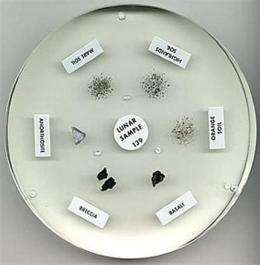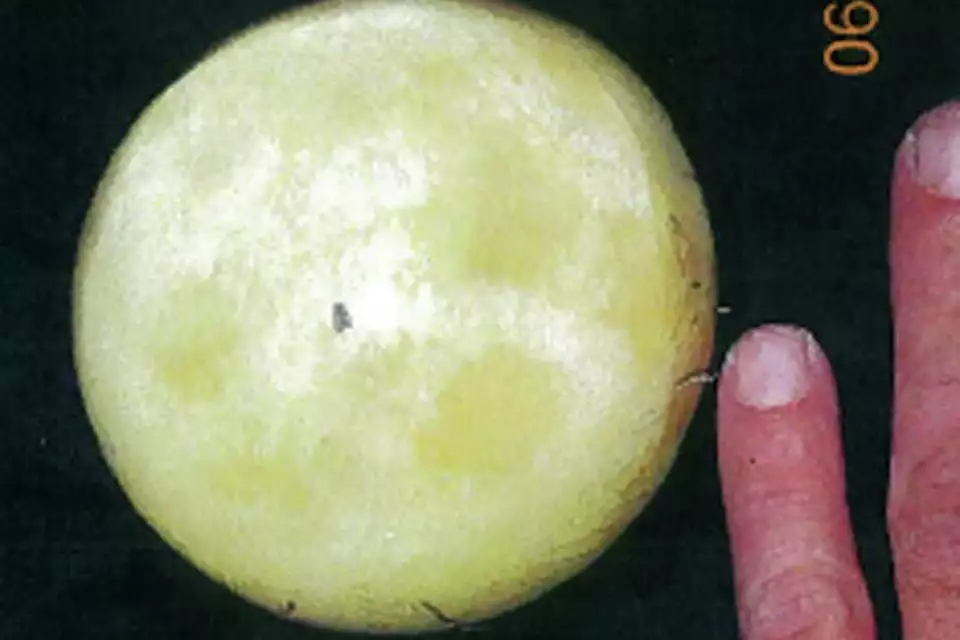This thread had its origins as an on-topic reply by @Schnitte in the missing artworks and treasures thread, responses to which veered off into a hijack on the legality of owning or acquiring moon rocks.
The conversation continued with contributions by @Omar_Little, @DrDeth. @markn_1, @Northern_Piper, @bryanmaguire, @hajario, and yours truly. After @Chronos asked us to knock off the hijack, I dived waaaayyyy down this rabbit hole, and can make an extensive, but not exhaustive, report.
TL/DR: “A 2,400-word OP? Are you nuts, commasense? I know all there is to know about Moon Rocks. Take me to the discussion about the legality of possessing or acquiring moon rocks.”
In preparing this report I have referred to many sources, but especially CollectSpace.com, a “news publication and online community for space history enthusiasts and professionals,” managed by Robert Pearlman.
Basic Facts about Moon Rocks
There are four sources of lunar material here on the surface of the earth:
-
Apollo 11, 12, 14, 15, 16, 17, 1969-1972
842 lbs/382 kg of “lunar rocks, core samples, pebbles, sand and dust -
Russian probes Luna 16, 21, 24, 1970-1976
0.66 lbs/301 grams -
Chinese Chang’e 5, 2020
3.8 lbs/1,731 grams -
Meteorites, mostly found in Antarctica, African deserts
370 pieces, >2,400 lbs/1090 kg
The last category, meteorites, is the only one which is unequivocally legal for private citizens to own. A 30-pound lunar meteorite was sold for $2.5 million in 2020.
However, the following discussion will center exclusively on the 842 pounds of lunar samples brought back by the six Apollo missions that landed on the moon.
All of that material was kept by NASA at the Johnson Space Center in Houston, TX, in the Lunar Sample Building specially built to store and process it. NASA makes samples available for scientific research, public display, and education. The last category mostly involves distributing Lunar Sample Disks that contain “three Lunar rock and three Lunar soil (regolith) samples collected by Apollo astronauts…[encapsulated] in a six-inch diameter clear Lucite disk.” Several of these have been stolen or otherwise gone missing.
Samples loaned to researchers are supposed to be carefully accounted for while in use, and returned to NASA when the research is concluded, unless they were destroyed in the process. Borrowers sign loan agreements that specify these terms, and Johnson Space Center’s Astromaterials Acquisition and Curation Office is supposed to audit them for compliance.
It turns out that this has not always been done perfectly. In late 2011, perhaps in response to some of the incidents discussed below, NASA’s Office of Inspector General (OIG) issued a report (PDF) on an audit that had been conducted over the previous year. It found that “Curation Office records were inaccurate, researchers could not account for all samples loaned to them, and researchers held samples for extended periods without performing research or returning the samples to NASA.”
Here is a news item that summarizes the OIG report.
However, as far as I can tell, except for the NASA interns theft discussed below, none of the reported cases of “stolen” moon rocks that have involved law enforcement or lawsuits (summarized below) have involved research material. Virtually all of those cases have involved material from the Apollo Goodwill program or, in a few cases, material allegedly given to someone by an astronaut.
Although “moon rocks” may conjure the image of a fist-sized chunk, excepting the interns theft and one other case (see Cicco below), all of the samples in question are extremely small. The largest were a little over one gram, 0.035 ounces. For comparison, a dime weighs 2.3 grams. The smallest were barely more than dust, 0.05 grams. i.e., one-twentieth of a gram.
Using my kitchen scale, I determined that one dry split pea (half of a whole pea) weighs roughly one tenth of a gram.
(Note that this sample is 2 grams, at least twice as large as all but two of the cases we will discuss below.)




